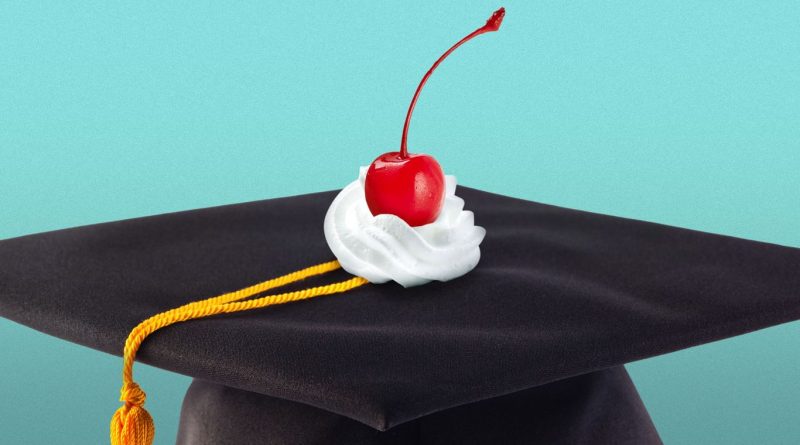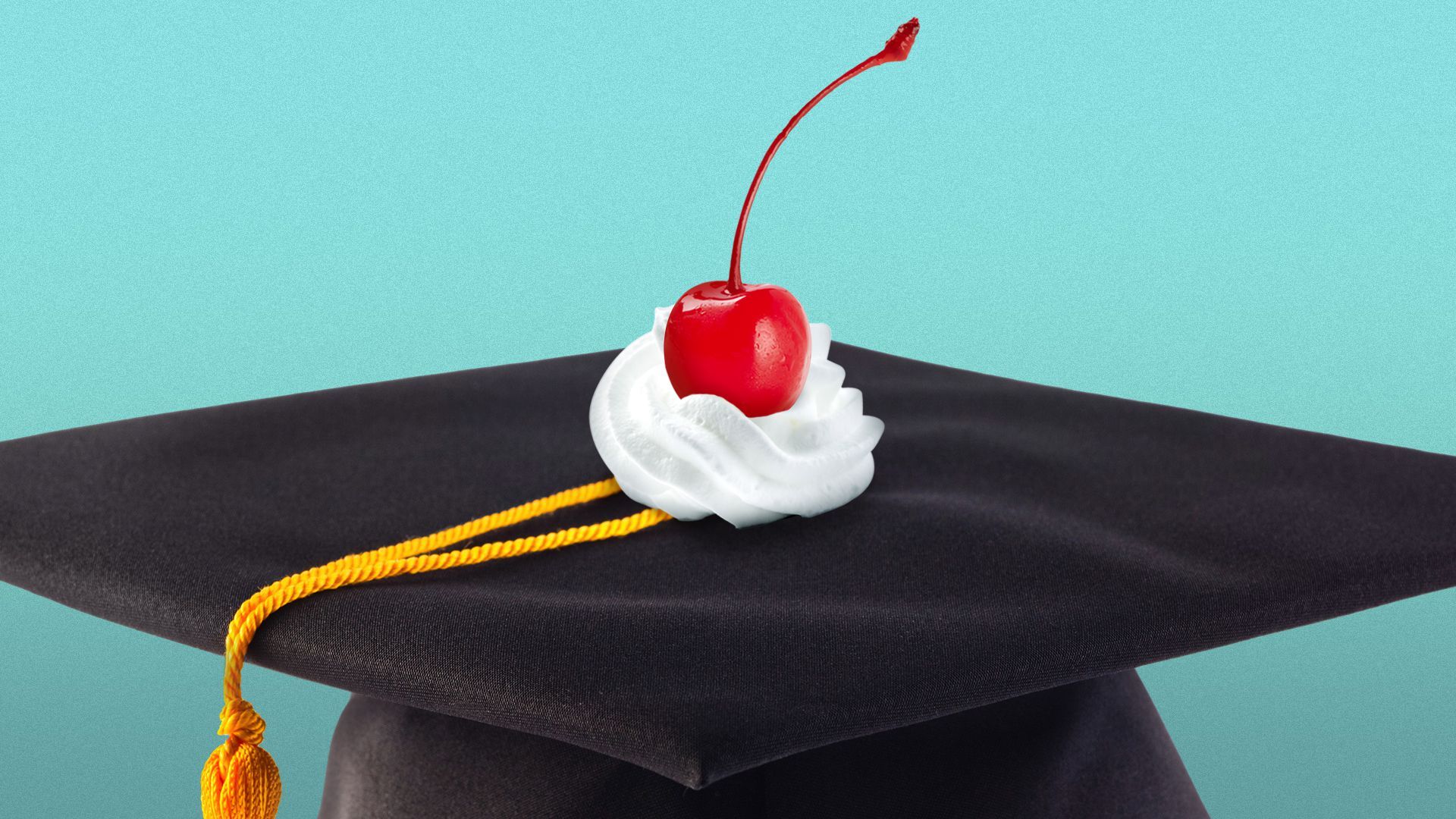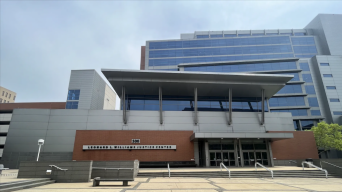Loan forgiveness is the cherry on top after years of pay moratorium
Illustration: Shoshana Gordon/Axios
Americans with student loans cheered the announcement yesterday that the Biden Administration is forgiving some of that burden. But for many this was just the cherry on top of the unprecedented — and possibly even more impactful — nearly three-year loan payment moratorium.
Why it matters: At an individual level, for some borrowers, the freeze on student loan payments first put in place during the Trump administration freed them up to buy homes, rent better apartments, switch careers. Some even went back to school. They also bought stuff.
- Mark Mullen and his wife made extra car payments, took trips, overpaid for Harry Styles tickets. "It's been amazing," says Mullen, who finished medical school in 2020 and hasn't had to make a loan payment since.
- He has $350,000 in debt, and tells Axios the $10,000 in loan forgiveness he might qualify for wouldn't have the impact the debt pause had.
- Mullen had an extra $500 in his pocket per month for more than 24 months. That $12,000+ far eclipses the cash from the COVID stimulus checks or childcare tax credit payments that some Americans received.
The big picture: While there's been hand-wringing and debate over whether the loan forgiveness will cause inflation, the plain fact is that the pause on loan payments already put upward pressure on prices.
- The loan cancellation plan is likely to cost more than $300 billion, Axios' Erin Doherty and Sophia Cai report. The federal government already spent $102 billion on the moratorium, according to the GAO.
On the flip side: Crucially, the moratorium helped shore up borrowers' personal finances. Their credit scores increased dramatically, according to an analysis from the NY Fed. And credit card use declined, as well.
- "As someone who graduated in 2020, it saved me from drowning under payments when there was no hope of starting my career," says Becca Cox, who is carrying $40,000 in loans. Instead of spending $389 month on loan payments, she saved the money while working in her Michigan hometown and then moved to New York where she found a better job than would have been possible before.
- Cox used Pell grants, which are for low-income students — and that means she likely qualifies for the $20,000 upper limit of debt cancellation. She was pretty excited yesterday. "I'm losing my mind rn [right now]," she messaged Axios.
"It saved us," said Arianna Masterson, of the moratorium. She's a nurse living in Ulster County, N.Y. with a typical monthly student loan bill of more than $1,000. This summer, because of the financial relief, she was able to take time off from work after giving birth to a stillborn daughter.
Yes, but: There are plenty of people who missed out completely on this massive stimulus.
- Those who didn't go to college, for starters.
Folks who refinanced their federal loans into private ones, to take advantage of lower interest rates, also were a bit chagrined.
- That's what happened to Brian Moore, a tech worker in San Diego, and his wife, who have about $80,000 in debt. He told Axios he's not bitter.
- "I don't think I'm sour about it. I'm not going to lose any sleep," he said.
Source: Read Full Article



